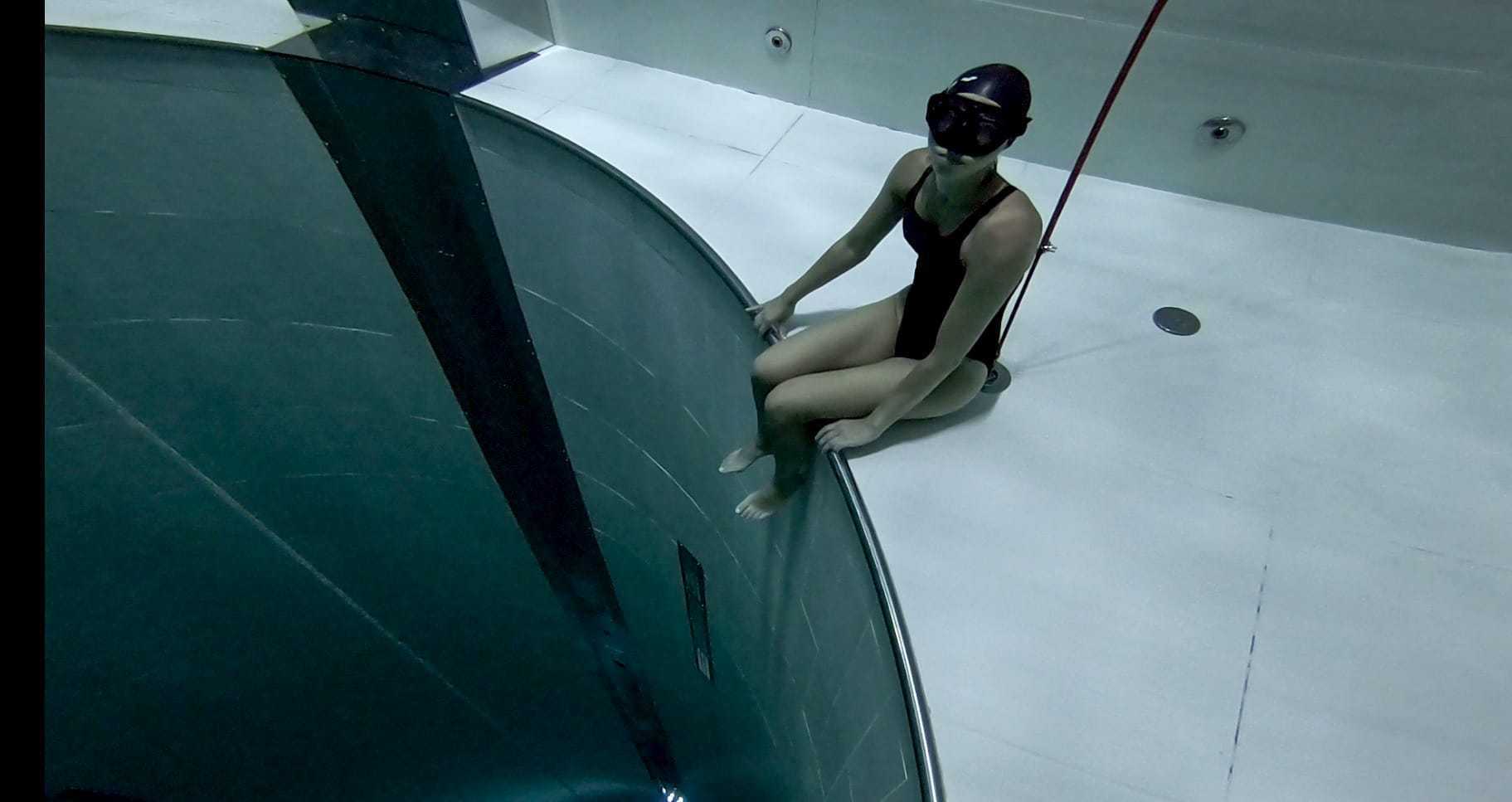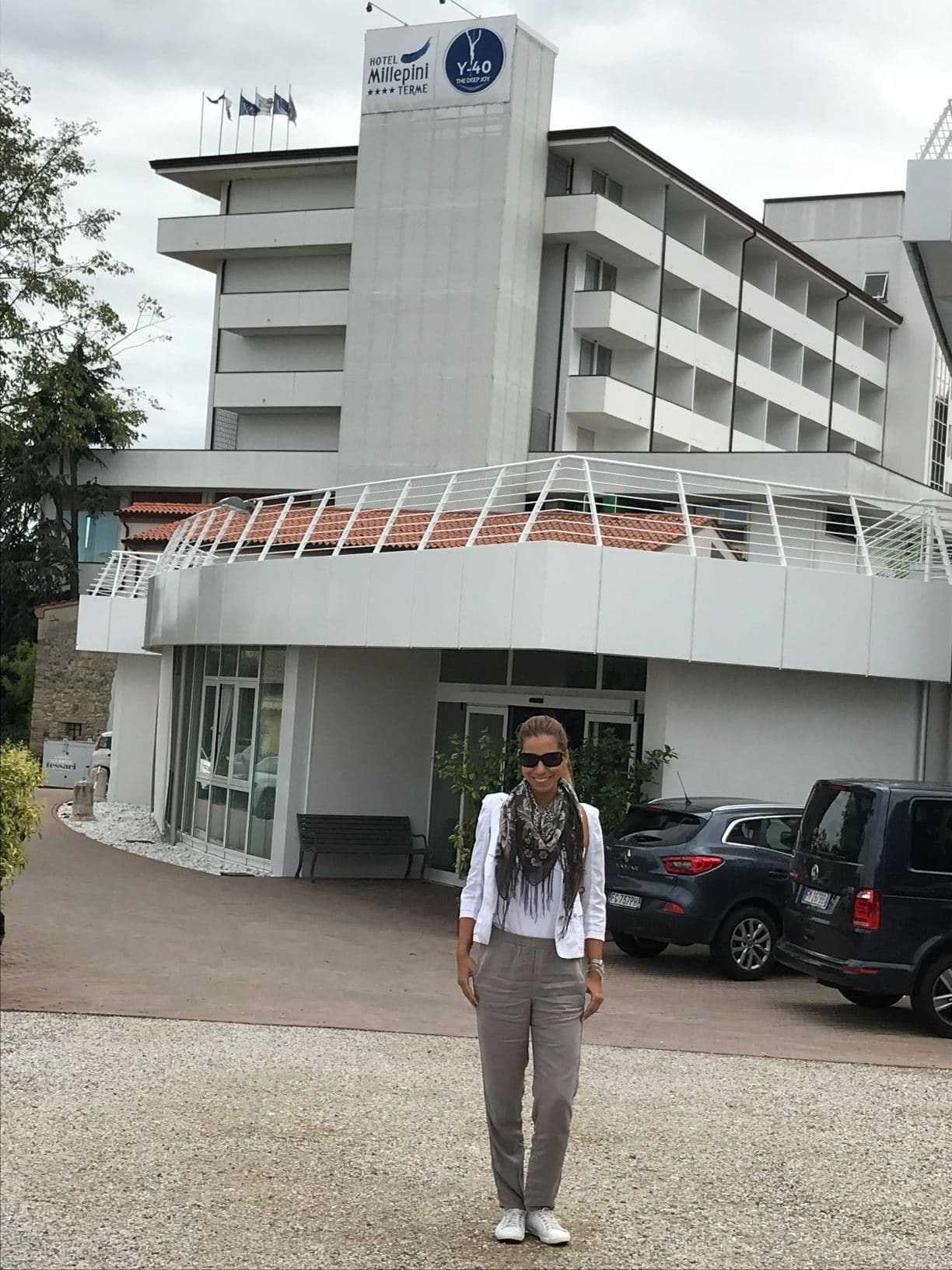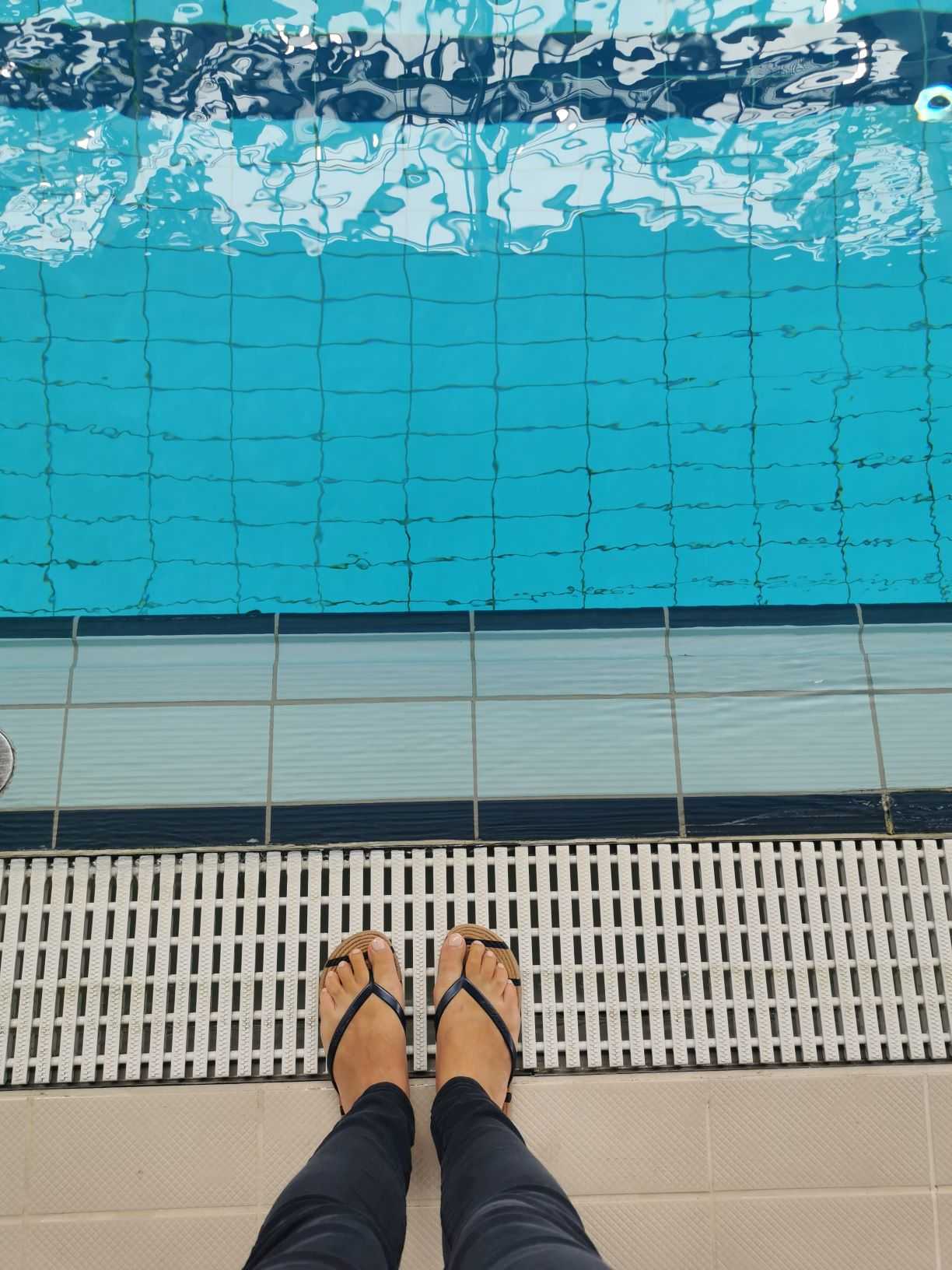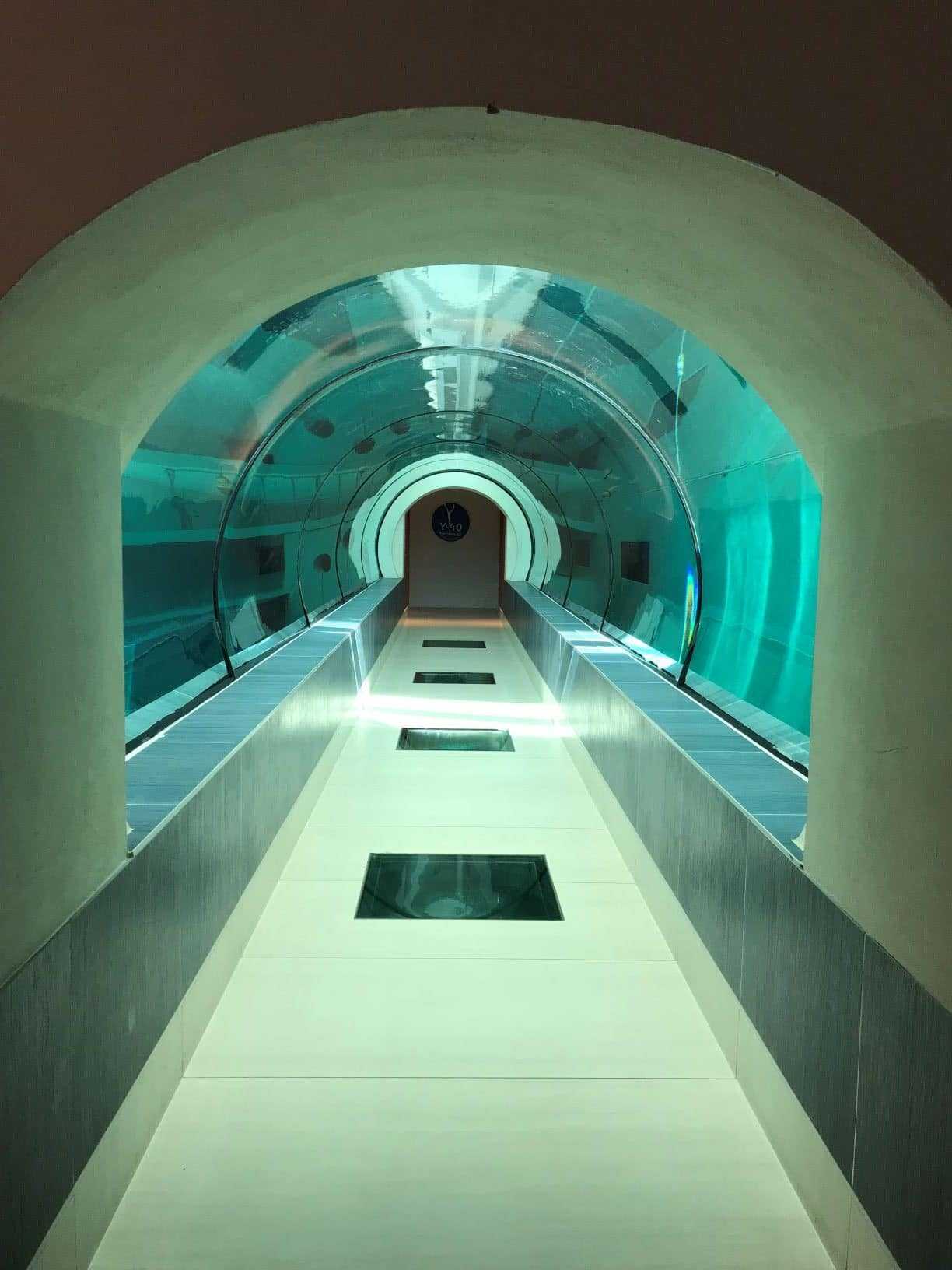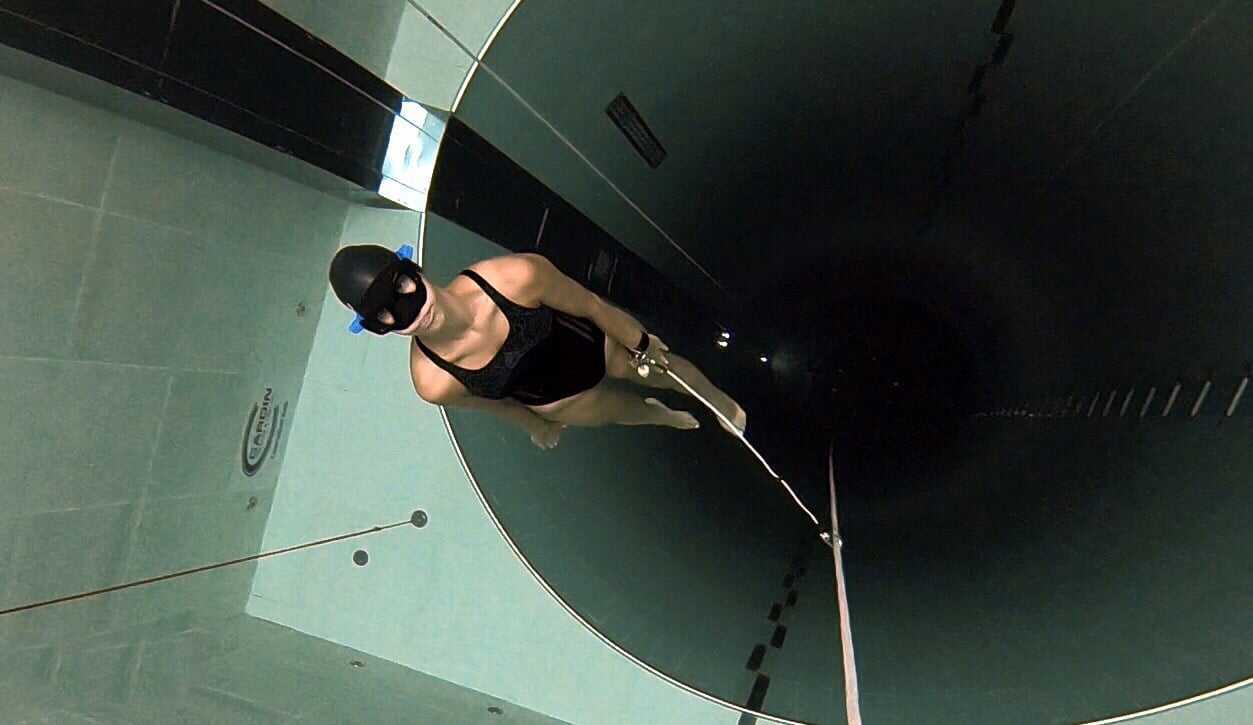Who hasn’t tried to hold their breath yet? Or swimming underwater and testing it, will I make it to the other side of the pool? But even on vacation, I’m sure you’ve seen some nice shellfish in the shallows at the bottom of the sea and tried to dive for it. Can you recall what it felt like? In recent weeks, Hungarian girl has set a record in freediving. On the occasion of this and because I’ve been thinking on it a long time anyway, I’ve decided to write my own underwater story. What it was like literally in the deep water, with one breath.
Let’s start there, that holding your breath is not an ordinary or common thing. It’s normal to breathe: an average of 16 times a minute. In a calm state, we absorb 0.5 liters of air, while in forced breathing we suck up to 2.5 liters of air into our lungs. After exhalation, although many people do not know this, there is still about 1 liter of air reserve left in the lungs, which also contains oxygen in case of need. The vital capacity of an adult person is four liters, which means the amount of exhaled air after complete inhalation and then complete exhalation. I’ve been diving for more than 10 years (I wrote about the beginnings here), but I tried freediving one year ago.
The difference between diving with a tank and freediving is that while in the case of the former, you go down as deep and as long as you can, while you breathe continuously underwater from your tank. It is a very convenient method to dive with a tank, but in return you cannot stay in the depths just for a definite time. Under the pressure of 2-3 atmospheres and with the air inhaled increase the partial pressure of nitrogen in your blood. And if someone does not keep the limit (no deco) times, he can easily get into depth intoxication (nitrogen narcosis), which means the loss of concentration and rational perception, and this is very dangerous in the deep water. Of course, there are other air mixtures, like nitrox and trimix, which allow you to stay down in the deep longer than normal air, but that’s a different theme.
Freediving doesn’t really require any special equipment other than a mask and nose clips. It doesn’t necessarily require a fin, although it’s certainly a quicker way to move deeper into the water. You can do freediving almost everywhere and what’s another plus point is that because you don’t give out bubbles or make noises, you can go quite close to marine animals without being noticed. After all this physiological and diving knowledge, I guess everyone is ready to go into the practical details of my diving with one breath.
In fact, I did not go to a beginner APNEA course in Budapest on my own, but partly out of boredom and curiosity. You can try freediving without training, but I don’t think it makes sense. There’s a lot you won’t understand, why and what happens, you won’t have a successful experience, you won’t be able to push your boundaries and suffer for success. What, suffering for success? Does this sport involve suffering? Yes. In many places, they only tell you about the beauties of this sport, euphemizing things like what a great experience it is to fall and fly after 20 meters, or how much dust you feel in the big blue. This is all true, but they do not add that this can only be achieved through suffering, because freediving is by no means about comfort.
Well, that was a phrase I heard at the theoretical training and it was the first time I asked myself, do I really need this? This feeling only intensified in the practical training, when we stood in the water on the edge of a 1,20m deep pool and experimented with a stopwatch to see how long we can stay underwater. Do certain contractions come when one is coping with the oxygen starvation? Well, I didn’t get these contractions in the pool, because when I got to the point where I couldn’t hold my breath anymore, I took my head out of the water and didn’t suffer anymore. I had a stronger instinct for survival than to suck myself and feel like I was drowning.
But that’s the key to freediving, that you have to go beyond your own boundaries and mentally, in your head, you really have to decide that, yes, that’s what I want and I can do it. So that the reader can just understand what’s going on in the body, I write it down. You take a deep breath, suck it all the way into the lung, get caught underwater. Try to set free your muscles, relax and meditate very deeply. You shouldn’t be thinking about what you’re going to do tomorrow, what things to be done, or shopping because it’s going to burn valuable oxygen in your body. And that’s not good, because you have to hold the breath as long as you can, and beyond. So the tip is to float like a water body in a pool that does not exist and does not think about anything.
This is the static form of APNEA (freediving), when you don’t move, you just float on the surface of the water and hold your breath as long as you can. During dynamic APNEA, you can move freely, either into the deep or with a neck weight at the bottom of the pool you can swim in the pool as many meters and rounds as you can.
In the case of breath retention, the point comes around 2 minutes when your body finds it difficult to tolerate the carbon dioxide in the blood. So you don’t breathe over and over again because you don’t have enough oxygen in your system, but because your body can’t take carbon dioxide. Well, during freediving, that’s the goal, so you can endure the hypoxic state for as long as possible. Plus, don’t accidentally blow the air out, because then the breathing stimulus comes automatically, and you can’t breathe in the water. If the moment has come when you can’t take it anymore and you still hold your breath longer, you’ll soon feel a sprain similar to a swallowing stimulus around your stomach, which is contraction. This can be tried even on land, the stimulus manifests itself in the same way.
Contraction is actually a signal from your body that you’ve reached your limit of tolerance and it’s time to breathe again. If you do not take another breath just hold it, the diaphragm will twitch again and again to squeeze upwards the air in the lungs, which, even with many minutes of breath held, contains oxygen to operate vital organs (brain, lungs, heart). Now, for me, that contractions didn’t come up during the practice session. Not even in the Alfréd Hajós swimming pool during the diving pool exercises, because I always came up to the surface from 4-5 meters away when I felt like I couldn’t hold my breath longer.
But this is the key to freediving, as lung tissue expands during breath retention, and over time it will not be able to store 4 liters of air, but up to 7-8 liters. Let’s just say that’s the professional level. Of course, it doesn’t matter how you breathe, because there are a lot of breathing techniques that will learn in beginner and advanced APNEA courses. As well as how to act in case of emergencies and help your partner. Because although freediving seems to be easy and it doesn’t require much equipment, you should never dive alone or without a partner. Not even in a school pool, because it’s not a game.
After two days of freediving training at home, I was very disappointed that I would never be able to do this. I’ve experienced it as a failure that even though other people can easily withhold air, there are certain contractions coming, and I can’t. Even though I’m a struggling type. I was about to let it go, but then I gave it one last chance.
I traveled from Budapest all the way to Italy, the Y-40, to face my fears again in the world’s deepest 40-meter pool. (Not for long, as a 45-meter swimming pool will be built near Warsaw, about which you can read more here). Going down in such deep water and beneath the surface was completely different here than in the artificial jumping pool of the 5.5-meter Hajós Alfréd Swimming Pool. At home, we were just checking the pressure and balancing. The emphasis is not only on the depth but also on the pressure, which must be continuously balanced during diving with tiny blows on the nose or swallowing what works for you. If you don’t do this, you’ll feel unbearable pain in your ears in a short time. My first freediving attempts took place in the shallower parts of the Y-40: first I ventured down to “only” 10 meters, then later to 15 meters, where I sat down and looked down at the bottom with charm, 40 meters down.
Surprisingly, and despite my previous failures, I liked it very much. I would add that after a few hours of practice and a beginner APNEA course, no one will go underwater as a perfect mermaid: this can only be achieved through long months of work and with perfect swimming technology. After taking the depths of 10-15 meters, I tried to descend deeper along a rope over the 40-meter “hole”. At first, I just pulled myself down by hand to get used to the pressure and apply the upside-down equalization – because it’s not that easy – or to feel the buoyancy of the air in my lungs.
Surprisingly, and despite my previous failures, I liked it very much. I would add that after a few hours of practice and a beginner APNEA course, no one will go underwater as a perfect mermaid: this can only be achieved through long months of work and with perfect swimming technology. After taking the depths of 10-15 meters, I tried to descend deeper along a rope over the 40-meter “hole”. At first, I just pulled myself down by hand to get used to the pressure and apply the upside-down equalization – because it’s not that easy – or to feel the buoyancy of the air in my lungs.
After two days of practice, I reached a depth of 30 meters in the Y-40, and since then I went underwater on the high seas without a tank several times. I have an interesting, double feeling: I am attracted and scared by the depth at the same time. Just as you often struggle to choose between your brain and your heart, I can best compare my relationship to freediving. If we look back at any stage of our lives, we’ll never be disappointed by what we’ve done, but by the things we haven’t. And anything the human mind can comprehend and believe can achieve. Just as, despite the initial disappointments and failures, I believed I could dive with one breath in the deepest pool in the world. In fact, I not only believed it, I realized it.



